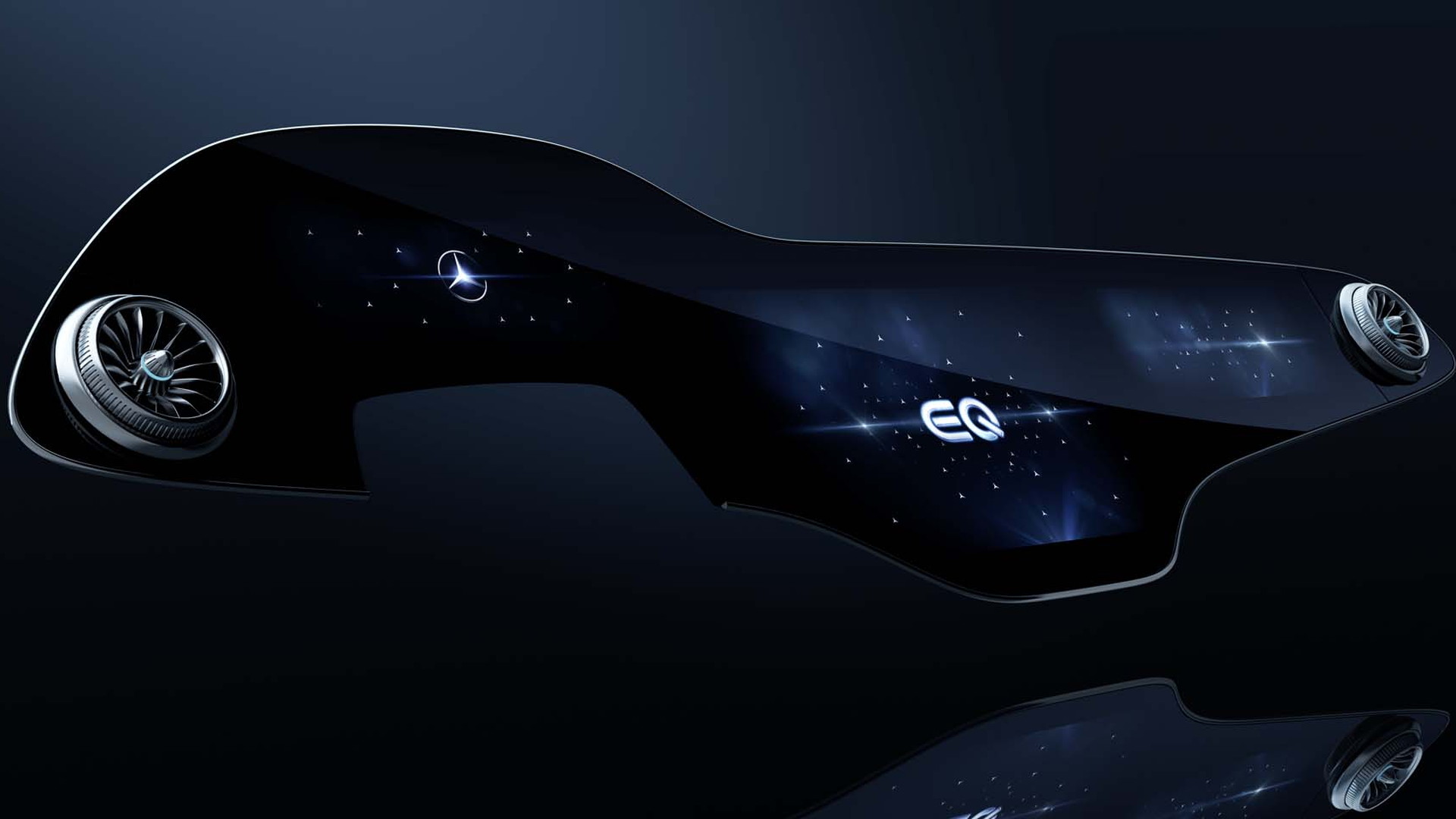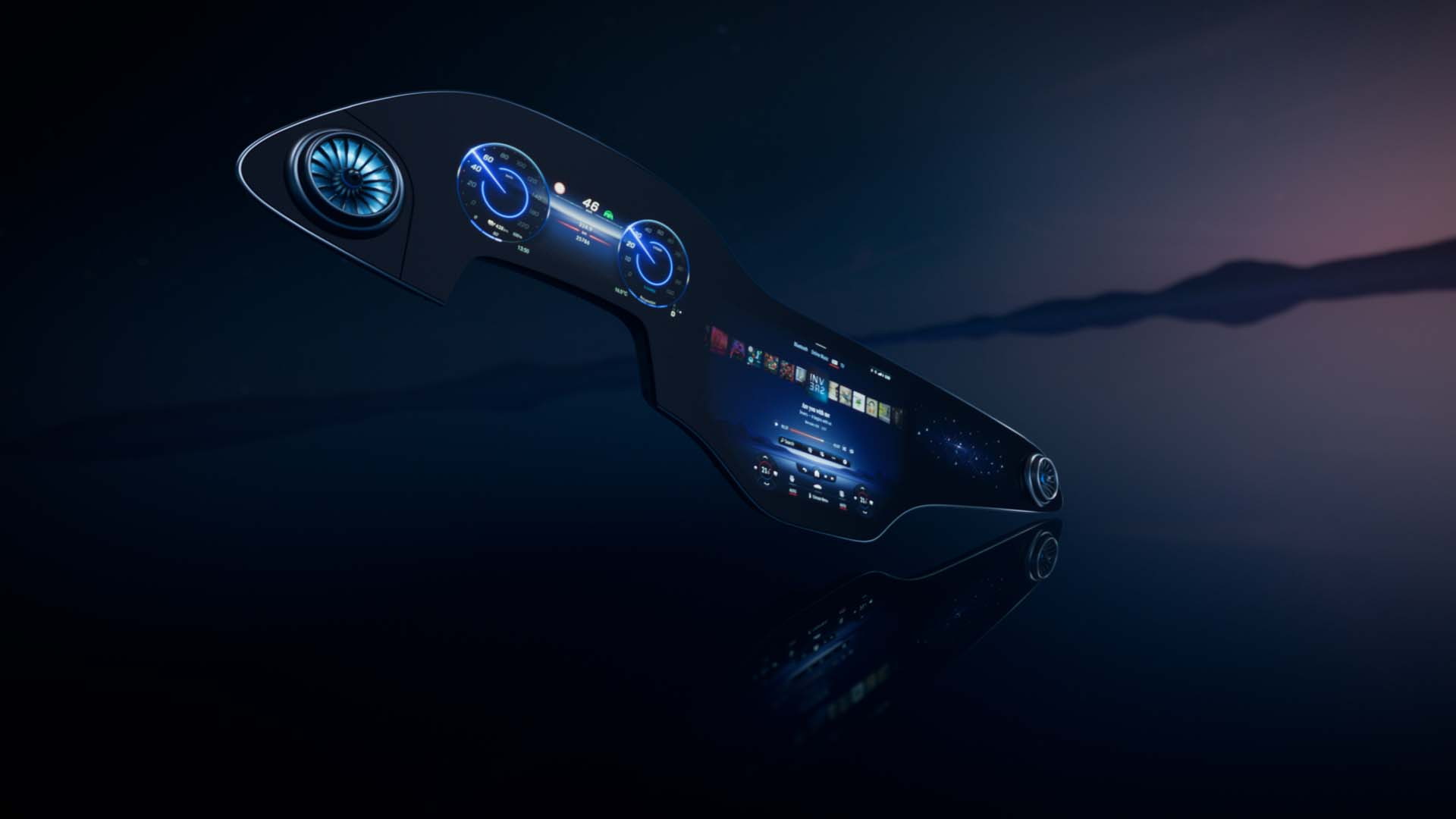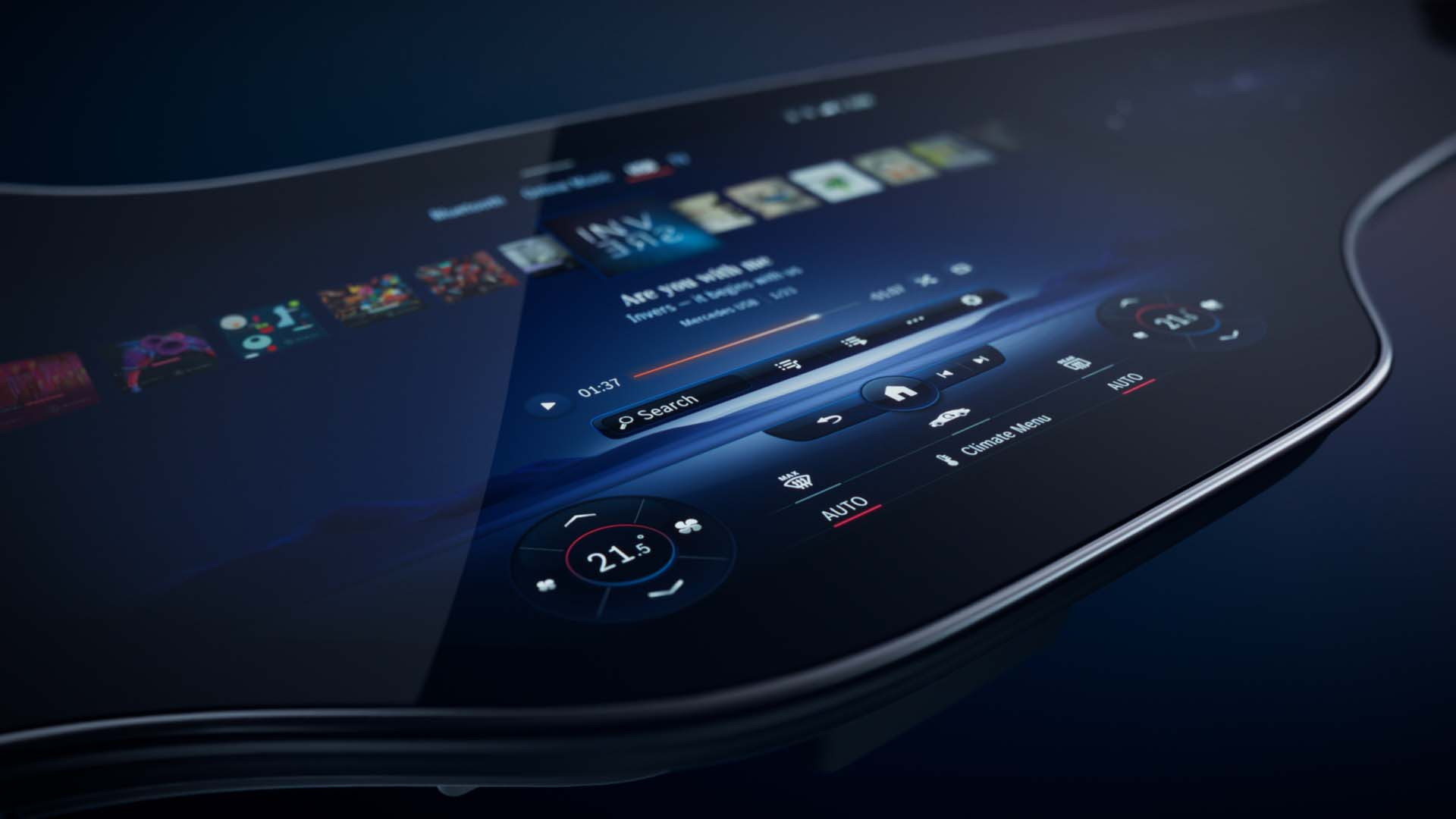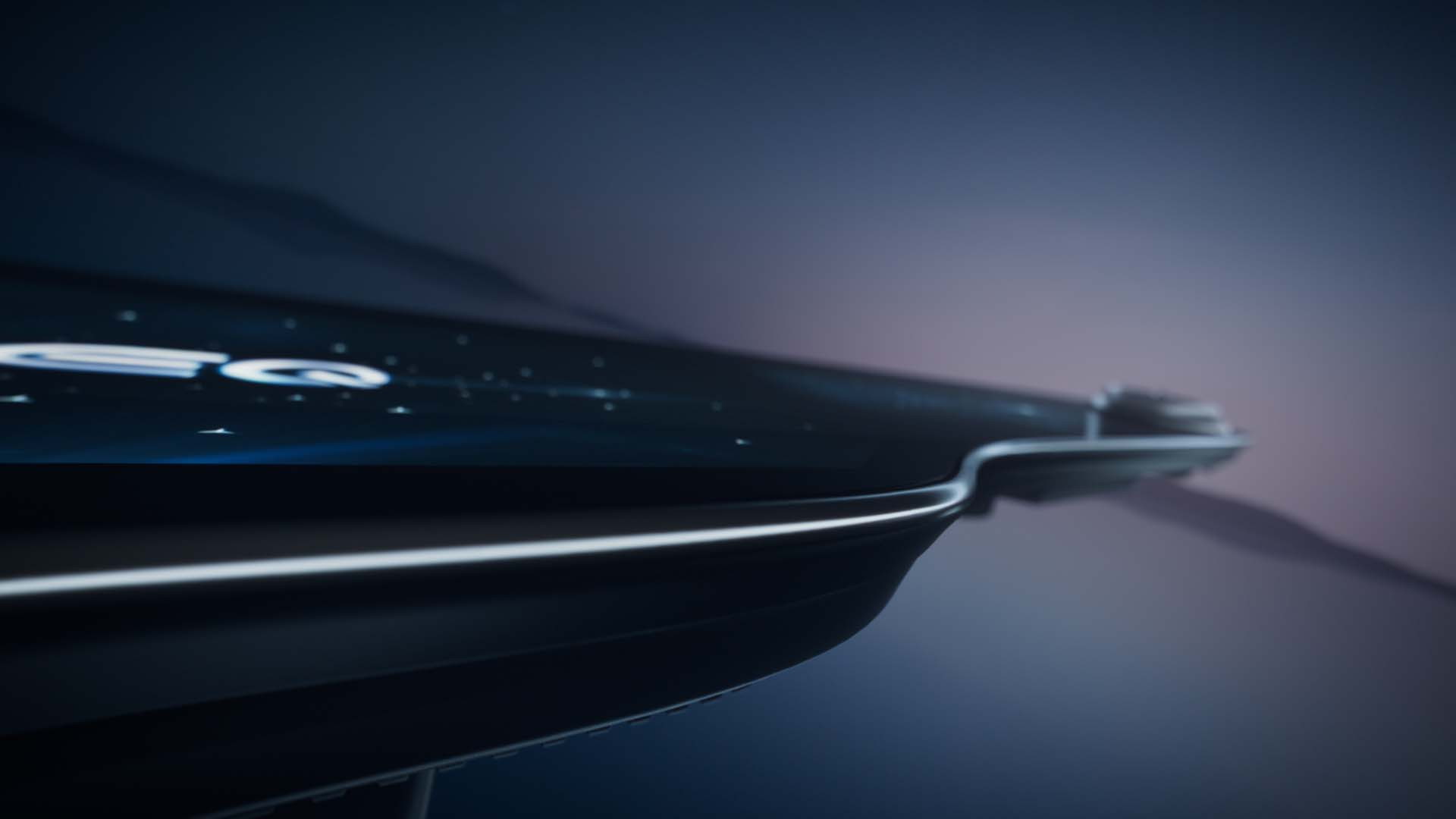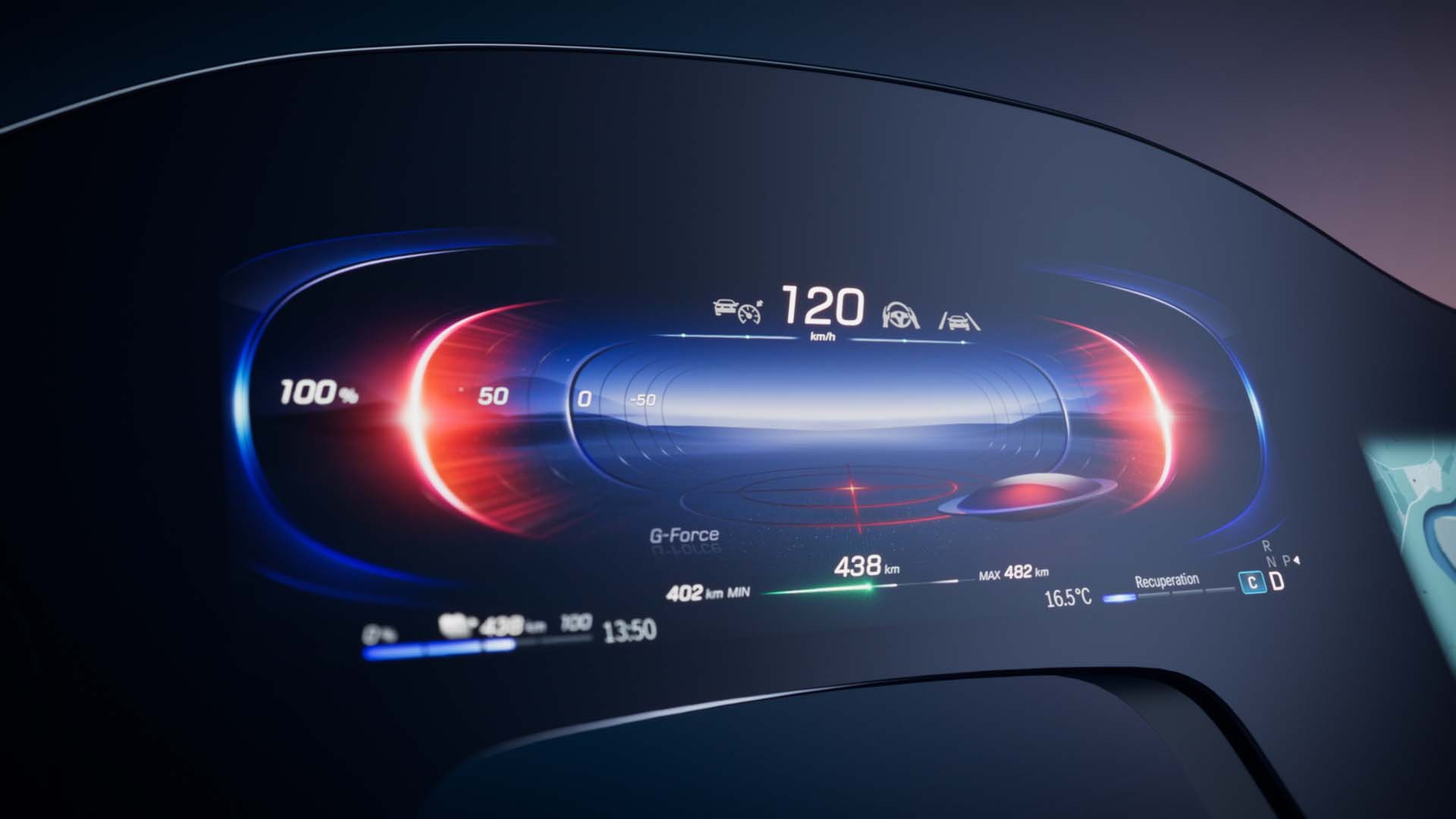How much screen space is just right for the electric luxury cars of the near future?
Although the company showed a minimalist direction in the far-off interface hinted by last year’s AVTR concept, it’s going a different direction in the near term: bigger is better. With the MBUX Hyperscreen system due to arrive later in 2021 in the EQS electric luxury car, a curved-screen system flows across multiple screen spaces and spans 56 inches wide—wider than the continuous single screen planned for the Byton M-Byte—and spans three different control zones.
The interface is adaptive in multiple ways, with eight CPU cores, 24 gigabytes of RAM, and 46.6 GB per second of RAM memory bandwidth. With up to seven profiles, it’s described by Daimler Group board member and CTO Sajjad Khan as “both the brain and nervous system of the car.”
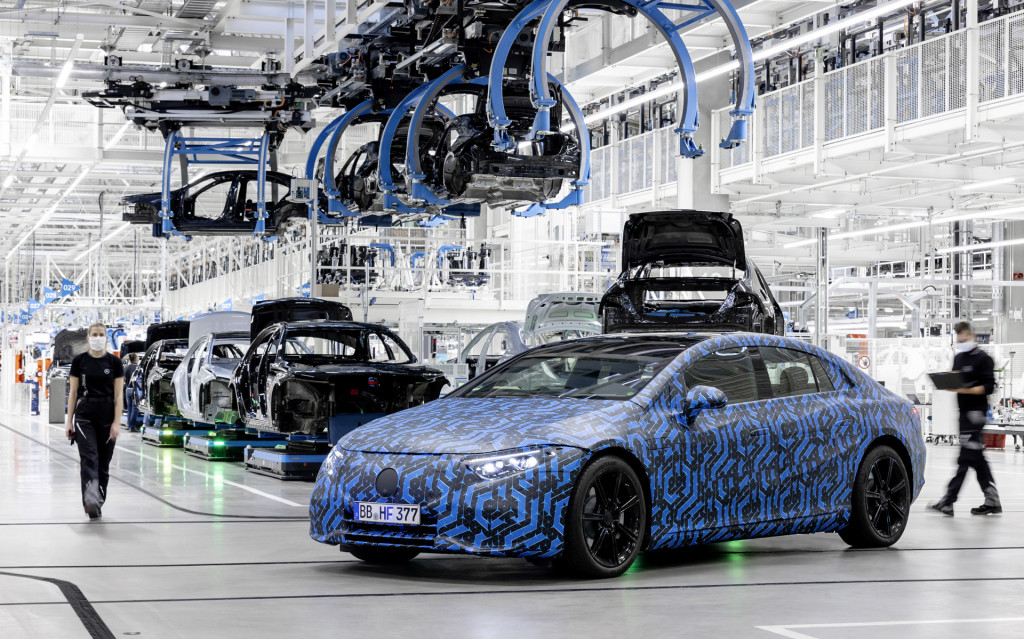
2022 Mercedes-Benz EQS prototype
"The MBUX Hyperscreen continually gets to know the customer better and delivers...tailored, personalized infotainment and operating offerings without the occupant needing to click or scroll anywhere,” Khan said, in an accompanying release.
The system uses OLED technology for the central and front passenger displays, and in front of the driver there’s a new digital take on the “classic cockpit display” with two circular instruments plus a new blue/orange scheme.
One of the focal points of the system in the EQS is an EV display, which visualizes boost and recuperation “in a new way, with a spatially moving clasp, making it tangible for the user.”
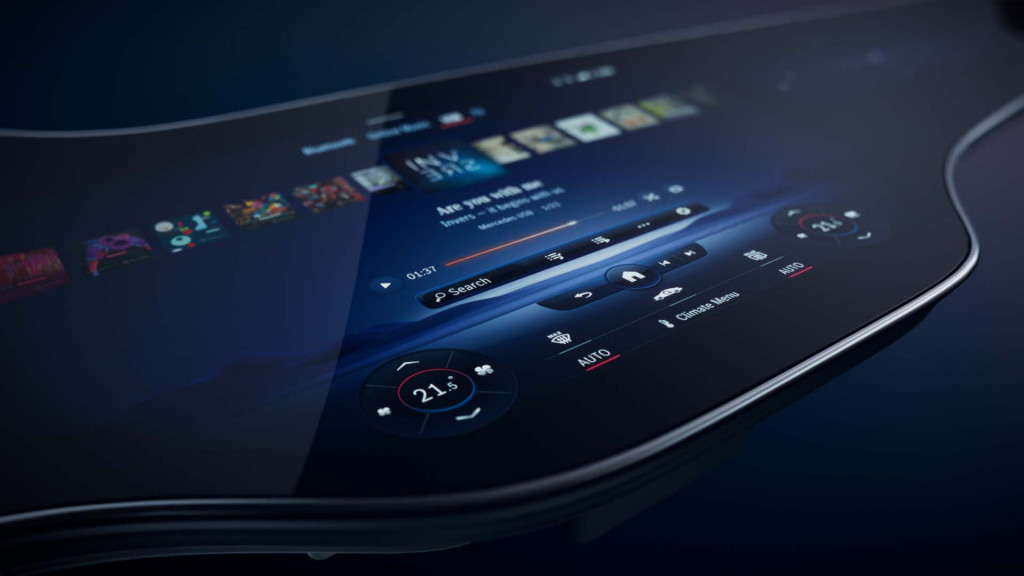
MBUX Hyperscreen from Mercedes-Benz EQS
The automaker calls it a “zero-layer” system, as the user navigates a completely flat structure, and says that the system has contact-sensitive awareness, learning from the use of navigation and communication features and incorporating to-do lists, business cards, and birthday reminders. The AI-driven system can also make suggestions based on the need for the heated massage seats or the need to raise suspension height for speed bumps.
The display not only functions for the driver, but for the front passenger, who gets their own display area, and air vents are integrated with the screen space, incorporating several screens that “appear to blend seamlessly.” Augmented-reality overlays help the driver, and there's haptic feedback throughout the screen spaces.
A multi-function camera and a light sensor help adapt lighting to ambient conditions. The glass display, made of scratch-resistant aluminum silicate, offers “a distortion-free view of the display unit across the entire width of the vehicle, irrespective of the display cover radius.”
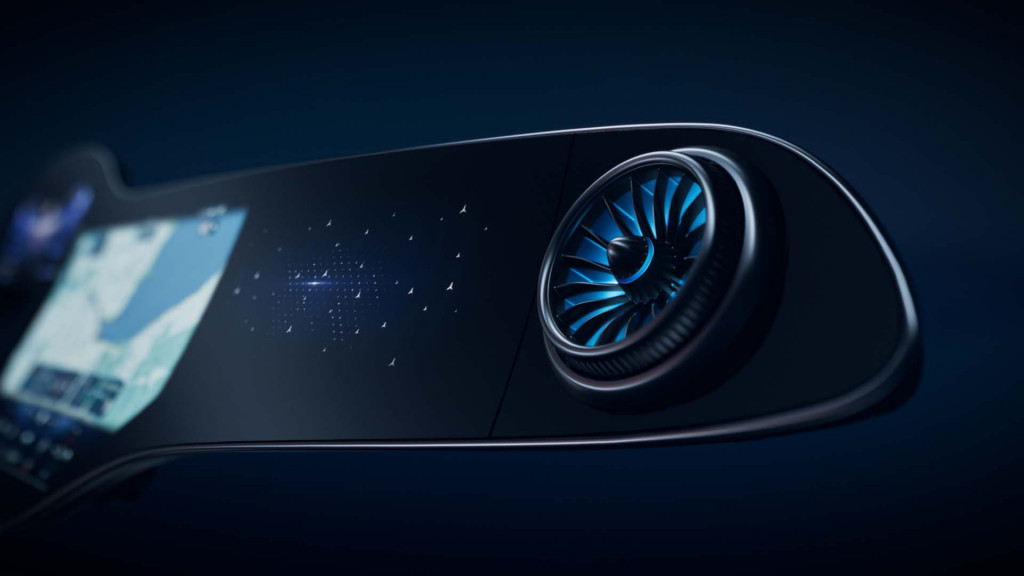
MBUX Hyperscreen from Mercedes-Benz EQS
Its cover plate has two coatings to reduce reflections and afford easier cleaning. And for safety considerations it has predetermined breaking points and a honeycomb structure.
The feature will be exclusive to the EQS sedan (and optional) on introduction. Expect the system to also arrive in the Alabama-built EQS electric SUV due just a year later. But with a new second-generation version of the non-Hyperscreen MBUX interface that made a bow quite recently in the 2021 S-Class, expect it to be a few years before such a system spreads to the rest of the lineup.
